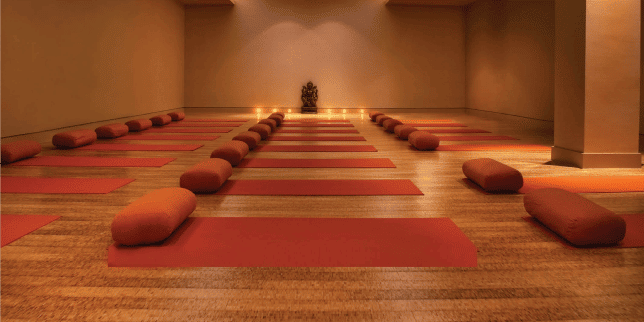Yoga Moves To Avoid After Giving Birth

7 moves that may not be safe postpartum.
While postnatal yoga moves can be great to loosen tight muscles, release tension, calm your nerves and gently rebuild strength in your pelvic floor and abdominal muscles, they can also be dangerous if your body isn’t quite recovered from birth. You need time to heal and process all the postpartum hormonal changes.
If you’ve experienced tears, have diastasis recti or went through a C-section, you want to choose your yoga poses with caution. Even if your doctor gave you the green light to work out, don’t rush back to your previous routines — ease back into it. That’s also true for avid yogis who want to build back their yoga practice.
Here are 7 yoga moves to avoid after giving birth.
1. Cobra.
When to avoid: If you have diastasis recti or had a c-section.
Though the cobra can help you strengthen your lower back, inner thighs, and pelvic floor, it can also hyper-extend the chest area and pull on the midsection, which can put stress on the incision, exacerbate any pain you may have and prevent the scar from healing properly. If you have diastasis recti and a weaker core, the full cobra pose can end up increasing your abdominal separation. So while you rebuild your core and pelvic floor or until your scar heals completely, you can choose a gentler stretch, like the child’s pose. Don’t forget to squeeze the muscles that stop the flow of urine while you are holding the pose.
2. Deep Twists.
When to avoid: If you have diastasis recti or had a c-section.
Twisting stretches put pressure on the belly and internal organs and should be avoided until you’re incision and diastasis recti completely heal. Upper-body twists in particular, like the twisted triangle pose, can put way too much pressure on your already vulnerable abdominal wall and pelvic floor. This can, in turn, worsen the separation of the abdominal muscles.
3. Malasana
When to avoid: If you’ve experienced any kind of tearing.
Malasana, which requires you to spread your legs and hold a squatting position, could affect the stitches and could ultimately worsen the tear. So until your tear fully heals, you can opt for a position like vajrasana, which has many benefits: strengthen thigh muscles and the pelvic floor (just remember to squeeze your pelvic muscles when striking the pose); get rid of back pain and constipation, both of which many new moms suffer from; and help meditate, concentrate and calm the mind, which could help you with sleep in the long run.
4. Cat/Cow.
When to avoid: If you have diastasis recti.
When done in full, the pose tends to add stress on the midline and hyper extend, which can, once again, exacerbate the muscles gap around your abdominals. That said, you can modify the move to make it easier on your belly muscles: start with a table pose with hands below your shoulders and knees under your hips. Make sure that instead of arching your back, you keep it straight. Exhale and curl your spine (like a Halloween cat) towards the sky. On the inhale come back to table.
5. Bow Pose.
When to avoid: If you have diastasis recti, had a c-section or experience swelling in the abdomen.
Just like any position that requires you to stretch out the front of your body, the bow pose can put to much pressure on both your surgical incision and on your weakened core muscles. So wait until you are completely healed from your procedure or make sure to strengthen your core before tackling belly stretches. In the meantime, if you need to relax your body and flex your spine, choose seated stretches, like the staff pose or the cow face pose.
6. Hanumanasana (Splits).
When to avoid: If you’ve had tearing or a C-section.
The hanumanasana pose is a no-no if your tear isn’t completely healed as it could reopen the wound. Splits also extend your lower body and specifically engage your hip flexors and hamstrings. These muscle groups are not necessarily affected by a c-section or a tear, but your body is still recovering from birth, so wait the split outs with seated leg stretches instead.
7. Inversions
When to avoid: If you’ve had a C-section.
Inversions, like shoulder stands, add pressure to the lower belly area and could cause discomfort. So until your scar heals completely and you feel your core is stronger, stick to easier poses, like a supported savasana. Make sure to relax and close your eyes, and you’ll be sure to reduce bodily tensions, improve your memory and concentration, and relieve headache and insomnia.
After giving birth, it’s natural to be eager to get back into a yoga routine, but it’s essential to approach it with caution, especially if you’ve experienced specific birth-related issues. While yoga can offer many benefits during the postpartum period, certain poses may not be suitable for everyone. It’s crucial to listen to your body and avoid poses that could potentially hinder your recovery or cause discomfort. Remember, postpartum recovery is a unique journey for each person, and it’s essential to prioritize your well-being as you gradually ease back into your yoga practice.


































